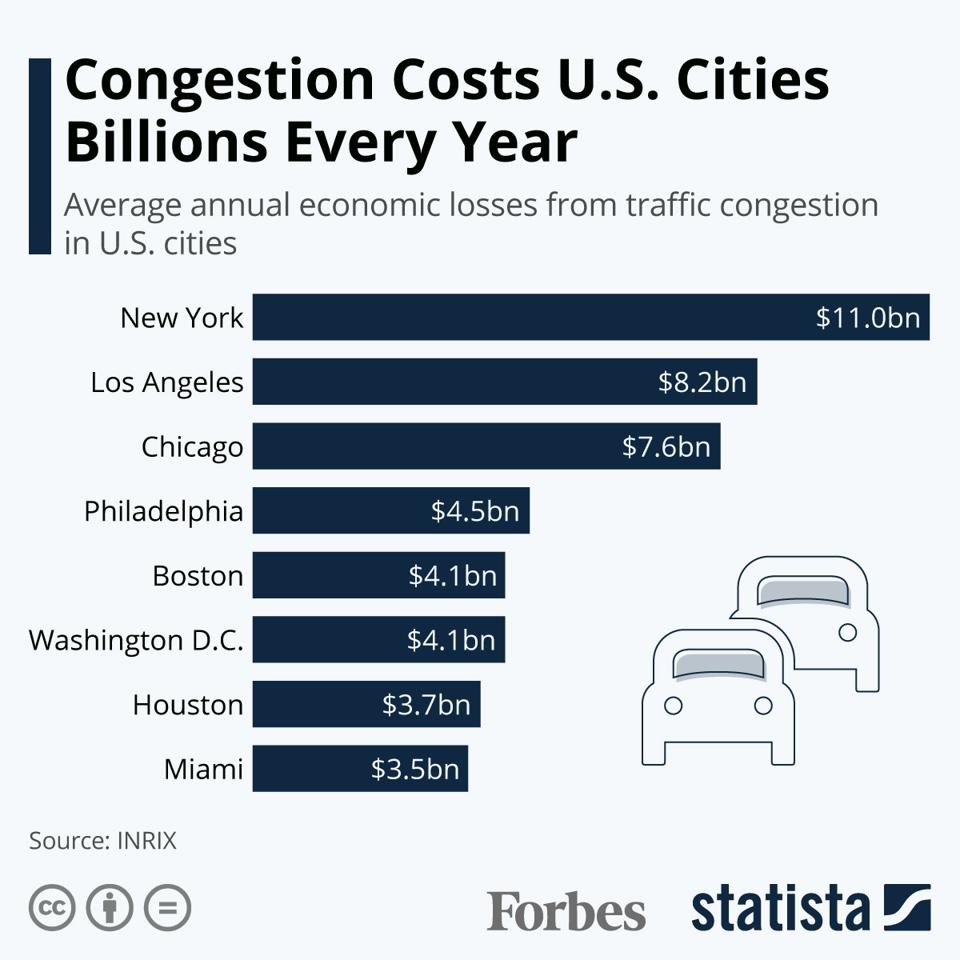Smart Roads describe a combination of technologies that make plain old roads “smart” and easier to manage, improving efficiency and safety. This is done by installing smart streetlights and traffic signs, and, ideally, by allowing these parts of our infrastructure to interact with smart or autonomous vehicles.
Sensors on and around the road gather data regarding weather conditions, traffic conditions (e.g. how many vehicles are moving in what direction at what speed), and so on, in order to allow algorithms to combine this data to optimize road usage.
Smart street lights can have longer green phases and shorter red phases in one direction compared to another. For example, if traffic is not evenly distributed at a specific place and time, the street lights will work to easily rectify that. Today, solving that problem would take digging up already traffic packed roads to install plates. Soon, it will be quickly installing remote sensors.
When there’s a lot of traffic in a single area, smart traffic signs can be used to divert some vehicles to an alternative route in order to reduce congestion risk and to make traffic flow more efficient overall. Certain weather conditions make driving unsafe in some areas, which can be factored into these algorithms, and smart traffic signs can thus show alternative, lower-risk routes to drivers.
This improves the driving experience and means a major quality of life improvement for those that drive a lot. Reducing traffic congestion will also result in a big boost of productivity. A couple of years ago, Bloomberg reported that traffic jams cost the US economy many billions of dollars per year, due to more accidents, deliveries not being on time, and so on. This is especially true for the largest cities.

When something makes us happier and our lives easier and when it’s good for the economy at the same time, there are good reasons for this technology to accelerate its development.
How To Benefit from The Growth of Smart Roads
You might think that smart roads will be beneficial for road construction companies primarily, but that’s likely not where the big potential lies. Existing roads can be upgraded to smart roads by adding sensors, smart street lights, and so on, so new roads don’t necessarily have to be constructed.
Instead, companies that supply the sensors, smart roads signs, and the data centers that work in the background should benefit a lot more from this trend. Intel (NASDAQ: INTC) is one such company that is very active in the Internet of Things (‘IoT’) market and that has smart infrastructure and smart roads products in its portfolio. NVIDIA (NASDAQ: NVDA) should benefit via its data center exposure.
Tesla (NASDAQ: TSLA) and Alphabet (NASDAQ: GOOG), via its subsidiary Waymo, are also poised to benefit from smarter roads, as this helps with their autonomous driving technology offerings. Smart vehicles and smart roads benefit from each other.
Get Ahead of the Next MegaTrend and Join Our Premium Portfolios!
Unleash the Power of Proffe’s Growth Stocks
Gain exclusive access to our monthly entry-level publication featuring 20 handpicked MegaTrend stocks, carefully selected using Michael Proffe’s Trendsetter strategy.
Supercharge Your Portfolio with MegaTrend Stocks and Options
If you’re serious about building generational wealth, incorporating options alongside your stock picks is essential for long-term growth. Introducing Proffe’s Trend Portfolio, a fusion of top-notch MegaTrend stocks and carefully selected, long-term, in-the-money call options based on Michael Proffe’s proprietary 3-step TrendSetter analysis. Gain access to our exclusive, time-tested stock portfolio accompanied by our distinctive and successful options strategy.

